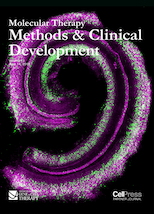 Complement-mediated damage to the neuromuscular junction (NMJ) is a key mechanism of pathology in myasthenia gravis (MG), and therapeutics inhibiting complement have shown evidence of efficacy in the treatment of MG.
Complement-mediated damage to the neuromuscular junction (NMJ) is a key mechanism of pathology in myasthenia gravis (MG), and therapeutics inhibiting complement have shown evidence of efficacy in the treatment of MG.
In this study, researchers describe the development of a subcutaneously administered N-acetylgalactosamine (GalNAc)-conjugated small interfering RNA (siRNA) targeting the C5 component of complement that silences C5 expression in the liver (ALN-CC5). Treatment of wild-type rodents with ALN-CC5 resulted in robust and durable suppression of liver C5 expression. Dose-dependent serum C5 suppression was observed in non-human primates, with a lowering of serum C5 of up to 97.5% and the concomitant inhibition of serum complement activity. C5 silencing was efficacious in ameliorating disease symptoms in two standard rat models of MG, demonstrating the key role of circulating C5 in pathology at the NMJ. Improvement in disease activity scores and NMJ pathology was observed at intermediate levels of complement activity inhibition, suggesting that complete ablation of complement activity may not be required for efficacy in MG.
The pre-clinical studies of ALN-CC5 and efficacy of C5 silencing in rat models of MG support further clinical development of ALN-CC5 as a potential therapeutic for the treatment of MG and other complement-mediated disorders.
